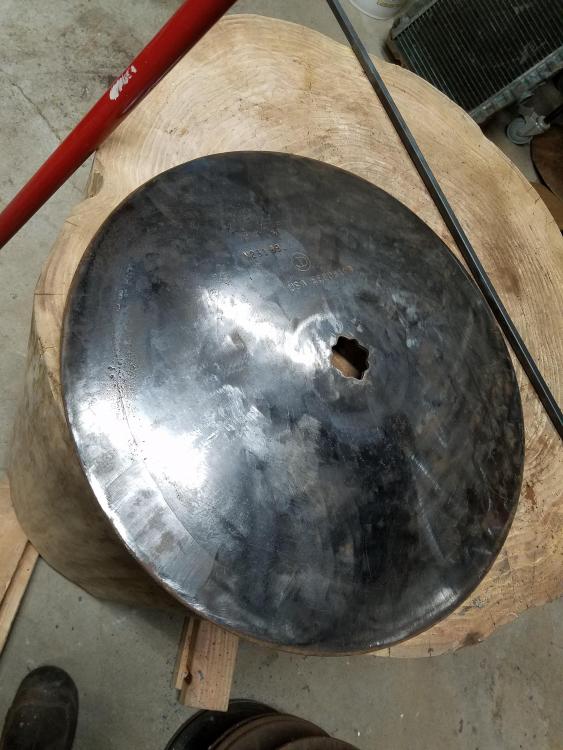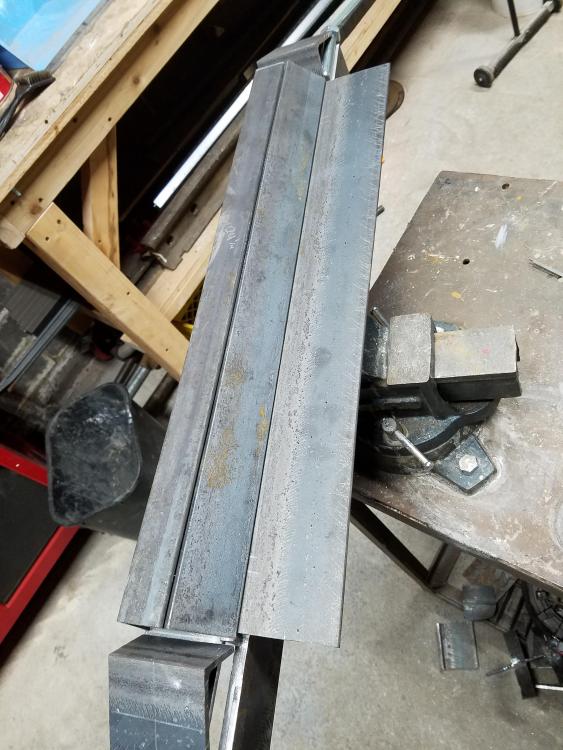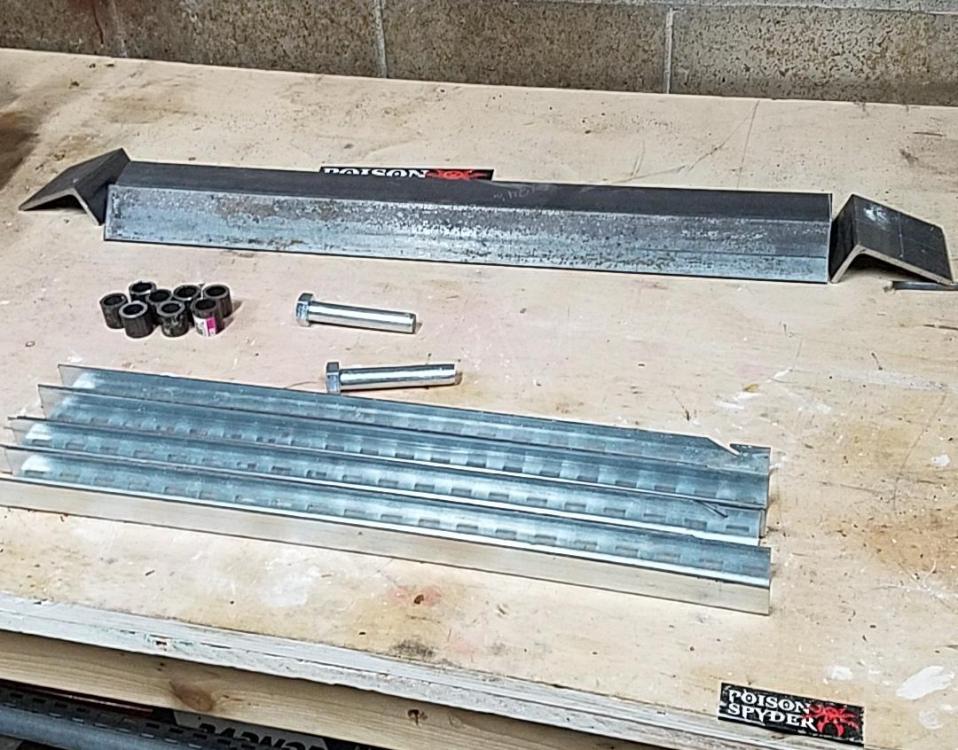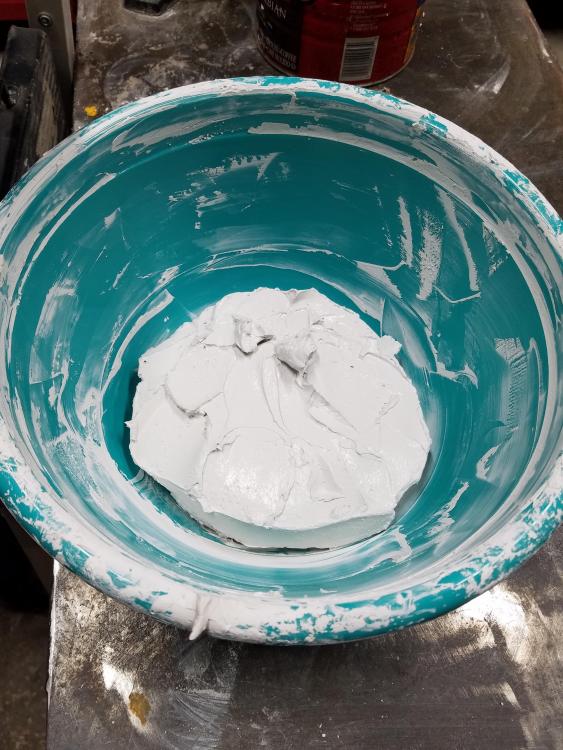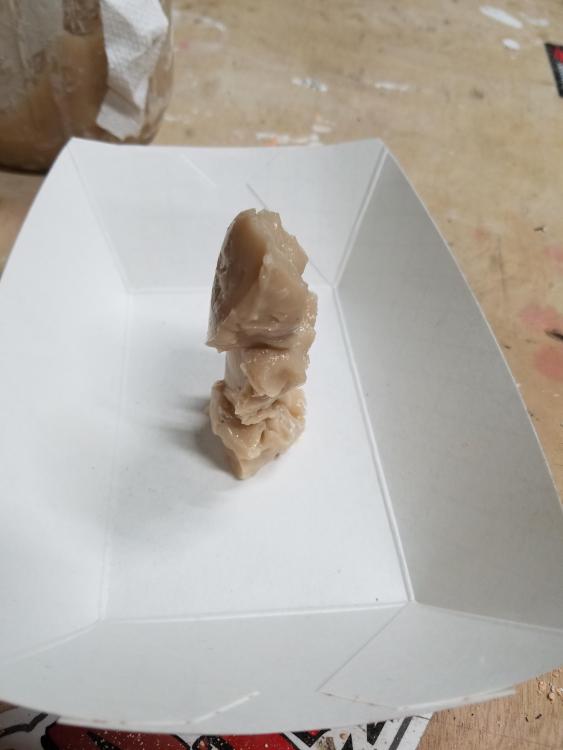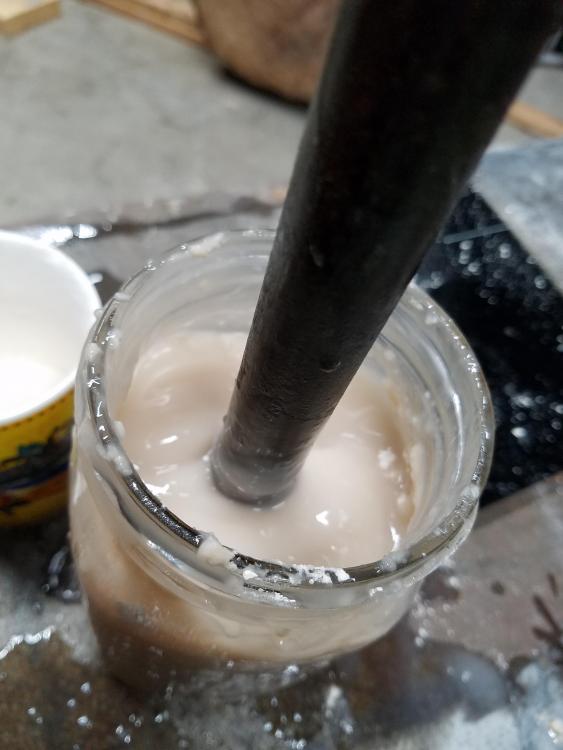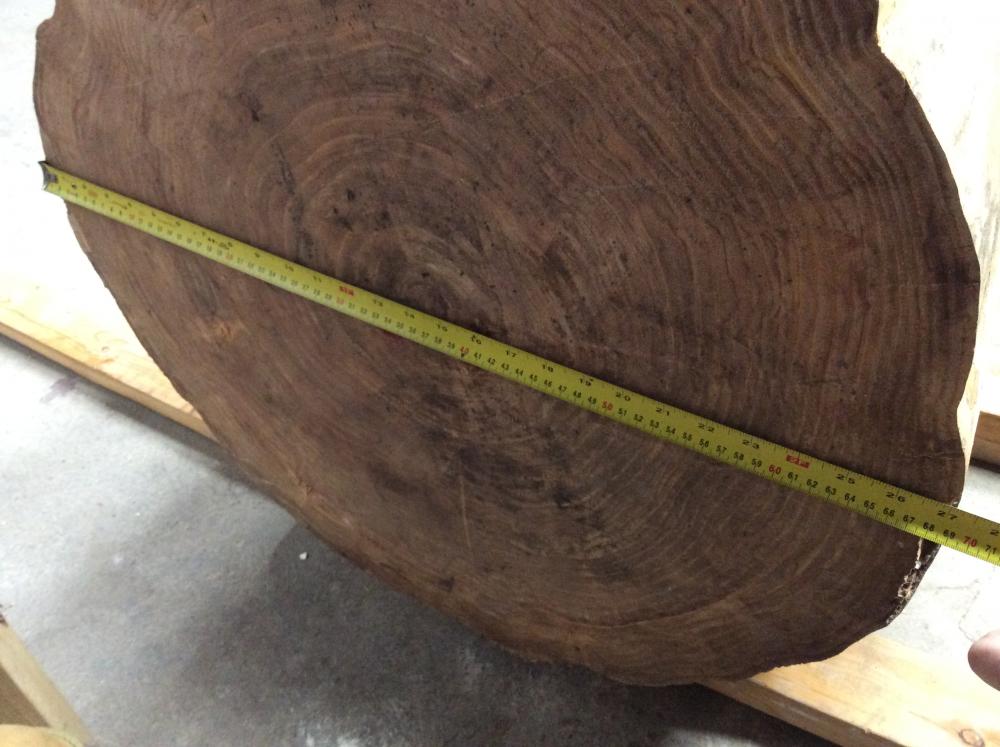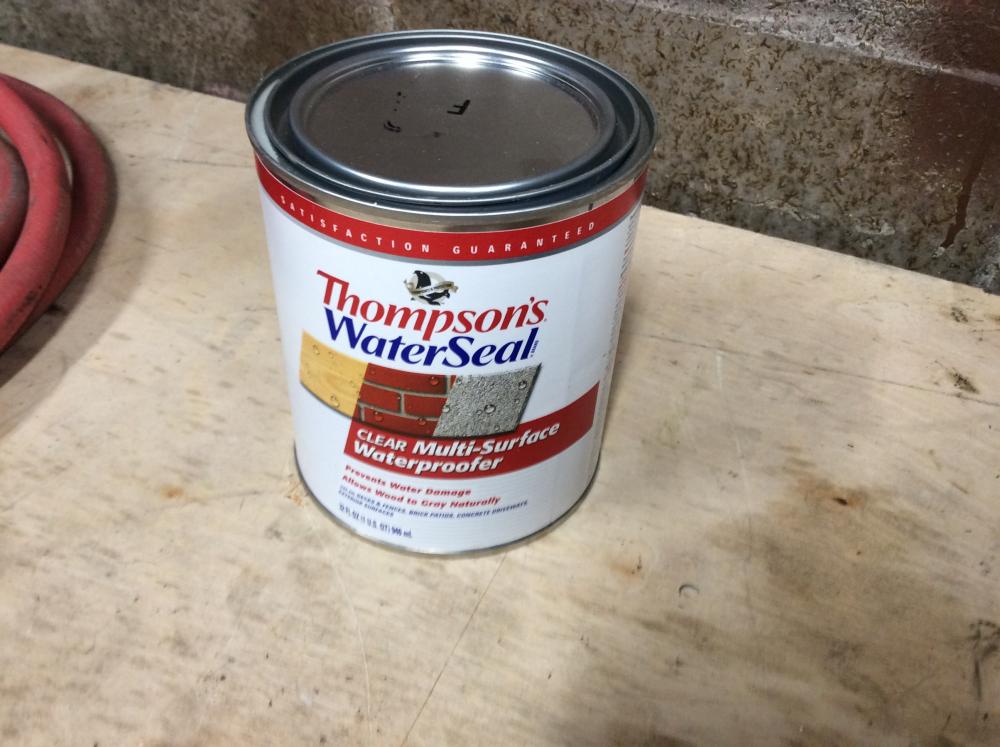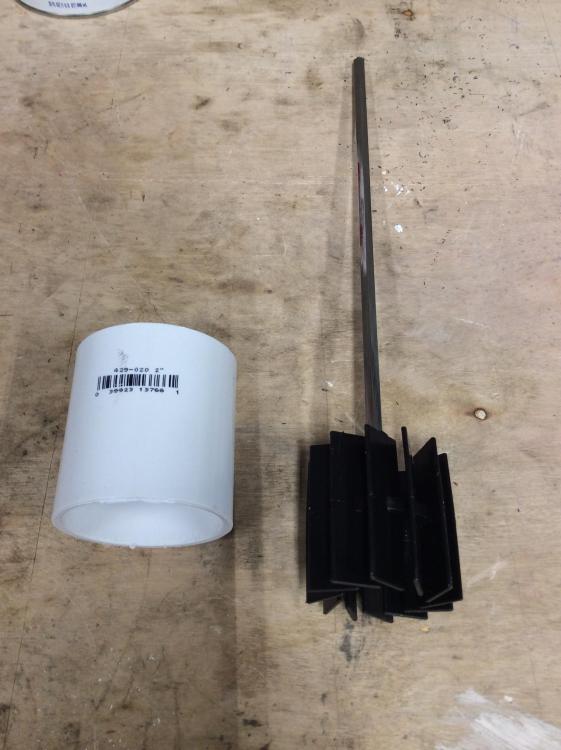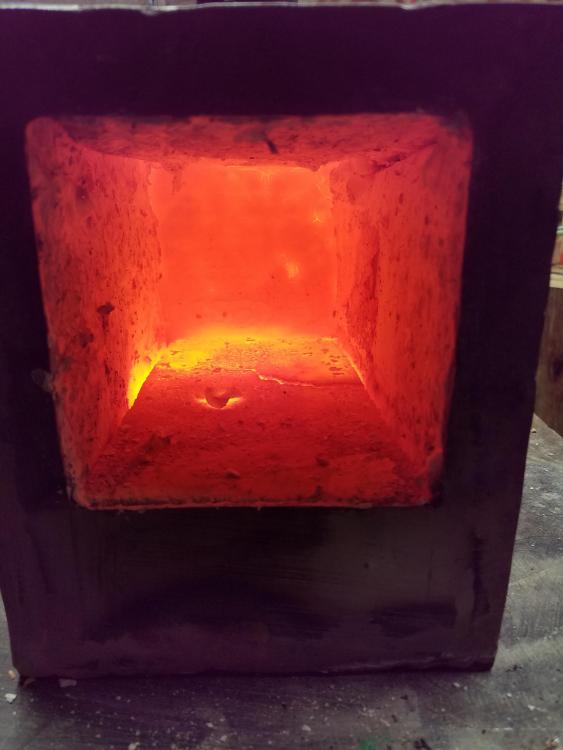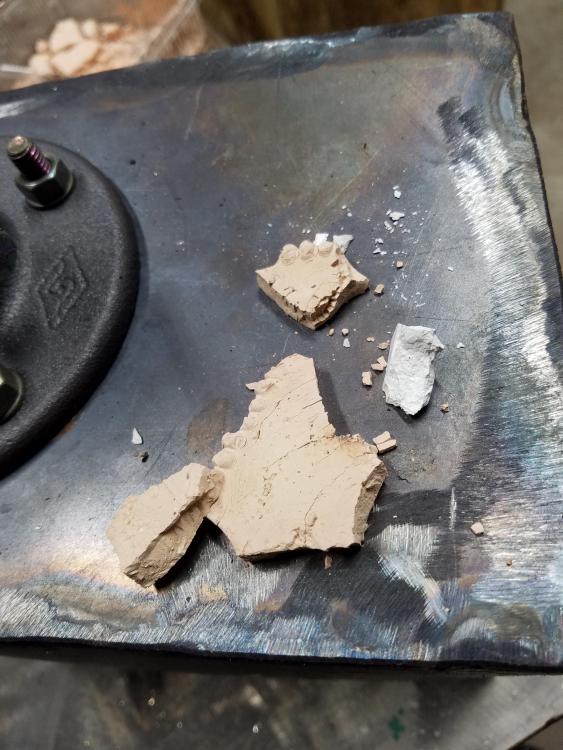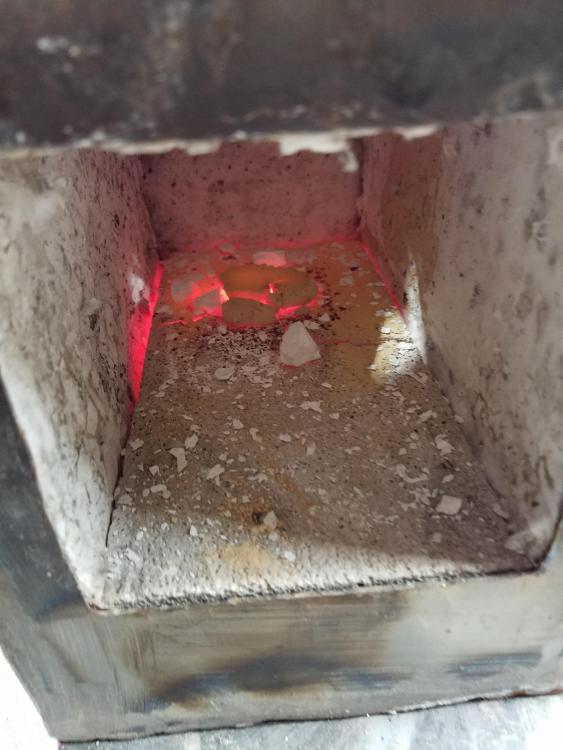
Mellin
Members-
Posts
115 -
Joined
-
Last visited
Content Type
Profiles
Forums
Articles
Gallery
Downloads
Events
Everything posted by Mellin
-
Thank you! I might go back and pick up all the "good" ones they are only .30 a pound. I will also read high carbon welding procedures.
-
What is the name of this agricultural doohickey i picked up 4 they make great bases for vise or grinder stands
-
I found some plans online for a sheet metal brake so I picked up the materials and got to work. I'll be doing the welding later and the c channel is for another project.
-
I’m waiting on this mix to dewater and I didn’t get to the garage today there was supposed to be a blizzard that turned out to be nothing terrible at all. I am going to do a dry mix of the zircax next time to see if I get similar results for consistency if I do I’ll leave this troublesome process as a note in my journal. Upon rereading through the Vanderbilt guide it says you can mix dry, I misinterpreted that as being for a different product but I think I am mistaken.
-
I used Thompson water seal one coat so fast seems to work good.
-
It was very hard to get hydrated i need a cloned of myself to help around the garage. I made a batch of mud This mix when dry will be approximately 96 percent zircopax plus and 4 percent veegum t it is extremely thick, while moist it has not changed shape since last night
-
-
https://www.vanderbiltminerals.com/assets/uploads/Documents/Technical/VAN_GEL_VEEGUM_Industrial_Applications_Web.pdf A rep on a ceramics forum said to use a device called a rotor stator homogenizer basically a lab grade immersion blender. However with this device I created a mix thicker than mashed potatoes but almost perfectly smooth with no lumps. 500 grams water 100 grams Veegum. I warmed the water 4 mins in microwave. There are multiple correct ways to get a job done some just aren’t by the book. Of all the things I didn't take a better picture of. I'll have one showing just how thick this stuff is outside the jar.
-
Thank you I’ll be at the metal store tomorrow for some angle iron and some more 1/4
-
The log Is so big around it’s ridiculous the small side might be 24 inches. Maybe a band for a 55 gal drum
-
So I finally got around to sealing my log. It has some cracks but I’m not too concerned. How did everyone band their logs. Pictures please?
-
So while at the hardware store today I came across this paint mixer and thought to myself how nice it looked for mixing veegum if only I had a tube I could slide over it and cut some holes in. So I walked over to the pvc fittings and found a 2inch coupler that only needed a little ridge reamed out and the vanes fit perfectly in. I will cut some holes on the side in the shape of long rectangles or maybe holes like a cheese grater. I’m basically just making a cup around a vane mixer to create shear force. I’m no expert but the shear created should be substantial as the speed of the outside pvc cup will be zero and the vane mixer inside will be powered by a drill. I have an electric weed whacker i would be willing to bet spins quicker if I ever took it apart to see if I could use that motor.
-
As an update when I crushed two of the tiles they broke into splinters which would lead me to believe I have sintered them at least partially. The back wall was coated in the 48.5/48.5/3 mix and makes a considerable show. I also found an old muffler but i don't see it being a forge any time in future. Mellin
-
I'll second that Frosty you're spot on.
-
That was a great read thanks Frosty. Another great one that may or may not explain in more every day terms. https://digitalfire.com/4sight/glossary/glossary_sinter_sintering.html
-
Indeed. A necessary trade.
-
So I fired a tile with a composition of 48.5% zircopax 48.5% cerium oxide 3% veegum t. It fired well however I dropped it and it broke into 4 pieces. The hardness is not quite that of pure zircopax however it still exhibited good thermal shock resistance I poured water on a chunk while still hot. If I could reach a higher temperature in my forge I may be able to get the full sintering hardness from the cerium oxide but the temperature is just out of reach currently.
-
I should also add that you are correct I want my zircopax and my cerium oxide to be able to be worked without tearing so that's why I am adding veegum. Zirconium silicate and cerium oxide are almost entirely non-plastic or in ceramics terms the opposite of plastic is "short". I did not explicitly state that as My intention for using Veegum T in this circumstance, that is my fault for assuming since I was asking about the moldable high temp refractory. I know Veegum in the end will be detrimental to the high end temperature rating of this refractory but I plan on using this as a learning experience to base future experiments off of. Mellin
-
I read on Veegum in the clay forums however most act like it is already common knowledge and unfortunately I missed my colloidal suspensions of smectite clay class in school. However the most basic rule for getting clay like Veegum into water is to add energy, the more the better. Shear force brought up in forges 101 is great for this so a shear vane mixer described by frosty is awesome unless you don't want to spend an hour plus mixing. Another way to add energy is heat so heating the water prior to mixing should help as well. Lastly time will help, an estimated six months of soaking the clay to get 100 percent hydration. What i am trying to achieve is good hydration of my Veegum T, (I have the brand name as to not get confused), so when I mix it with my Zircopax Plus (again brand name as to not get confused) I can get a homogenous mixture with my Veegum particles being as small as far apart as possible. I have already decided I am going to mix all of my Veegum into the least amount of water i can noting the weight of the Veegum and water separately so I can have a suspension with a known ratio. Then when the time comes that I need 3 grams of Veegum I can take x amount of the solution and be reasonably sure that there is a correct amount of properly hydrated Veegum suspended within that sample. I have been in the process of moving so I haven't been able to draw up any plans for my forge but assume it's going to be a 2 burner side draft oval forge. I am also going to see if any of my local colleges could mix and pug my "clay" for me. That seems to go along the idea of work smarter not harder. Also for the long forgotten third rule of blacksmithing I think it would have to be "always assume everything is hot in a blacksmiths shop until proven otherwise"
-
You are correct I did hand drill and tap I bought multiple fittings in case I messed up. The burner performs quite well and quite literally blows the little torch I had before out of the water.
-
I actually have a trove of old sanders i don't plan on ever using again for their intended purpose. I will consider making something of the sort as I build filter boxes for my shop this weekend. Also I did not bag the mixtures and let them set so next time I will treat it like a normal clay body. It's colloidal so it will never settle out? Why don't I just mix all my Veegum into the least amount of water noting the original weight of the Veegum before the water. Then I'll have a solution containing excess. So when I need to use it i can take enough to get the Veegum weight I desire and use that. It seems the most simple now that I think about it.
-
Am I just complicating things by trying to dissolve the Veegum into water first ? from what I am picking up from other posts people are just mixing everything at once. Veegum manufacturer says to mix into water then mix water into clay. Also if you have a technique for vibration mixing I would love to hear it.
-
I had them setting on plastic last night with a fan nearby tonight my tile is setting on cardboard. I have not looked into vibration for liquification. I will look but it sounds likely out off my league. Plus I still need to get the Veegum into the water fully, I'm sure I didn't get anywhere near full particle mixing. Just the process on how to mix the Veegum into water and get the right amount of Veegum and water into the zirconium silicate basically.
-
So my test tiles shriveled and cracked badly I used way too much water. Can someone go into their process for mixing Veegum. Do you make an excess solution of water veegum that would say be 6% by weight them mix with the zirconium silicate. I tried doing this with 15 ml of water and it was a terrible failure. However out of this failure I decided to fire the bits that I had left over in my forge. The zircopax tile blew up but the fragments fired very very hard. The cerium oxide again reached a yellow color outside the furnace for a short time but reverted back to Orange. the consistency chanced to A hard chalk compared to the fully glass zircopax. A note that the cerium tile started with almost triple the water but did not explode when heated. Areas around the cerium oxide stayed visibly red hot many minutes past shutting off the burner and removing from the forge. Monkeyforge or Mike of either of you have advice on mixing this stuff I would greatly appreciate it.
-
The cylinder is nice and full but I would be worried about using it.
- 6 replies
-
- gottabeexpired
- old
-
(and 1 more)
Tagged with:
